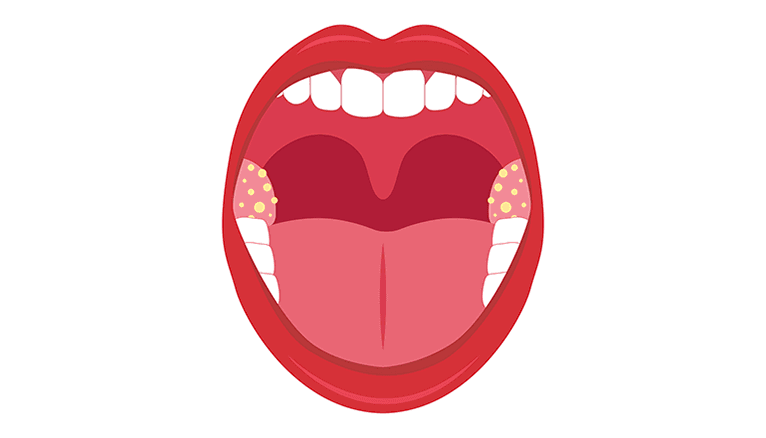Understanding Oral Cancer: Causes, symptoms and treatment options
By:

Apex Hospitals
07-07-2023 5 Min Read

Overview
Oral cancer is a severe and potentially life-threatening condition affecting thousands worldwide. It is vital to have a comprehensive understanding of this disease, including its causes, symptoms, and available treatment options.
What is oral cancer?
Oral or mouth cancer refers to the abnormal growth of cells in the mouth or oral cavity. It can affect various parts of the mouth, including the lips, tongue, cheeks, gums, and roof or floor of the mouth. Oral or mouth cancer is among the several types of cancer that belong to the group of cancer known as head and neck cancer. Oral cancer is the most prevalent in men in India (11.28% of all cancers) and the sixth most common disease in women (4.3%). In most of India, mouth cancer is now the most common type in men.
Symptoms of oral cancer
Recognizing the symptoms of oral cancer is crucial for early detection and prompt treatment. Some of the most common signs of oral cancer include:
- Persistent mouth sores or ulcers that do not heal within two weeks
- Red or white patches in the mouth
- Swelling or lumps in the mouth or neck
- Difficulty swallowing or chewing
- Persistent hoarseness or sore throat
- Numbness in the mouth or lips
- Unexplained weight loss.
- Pain in the ear that won’t go away
- Stiffness or pain in the jaw
It is important to note that these symptoms may also indicate other conditions. Still, if they persist for an extended period or worsen over time, it is essential to consult a healthcare professional for a proper diagnosis.
Risk Factors and Causes
The exact causes of oral cancer are not fully understood, but certain factors have been identified as potential contributors.
- The primary causes for oral cancer is tobacco use, including smoking cigarettes, cigars, pipes, and chewing tobacco.
- Alcohol consumption is another significant risk factor, especially when combined with tobacco use. It is believed that these substances contain carcinogens that can damage the cells in the mouth and lead to the development of cancer.
- Exposure to the human papillomavirus (HPV) has been linked to the development of oral cancer. HPV is a sexually transmitted infection that can be transmitted through oral sex.
- Poor oral hygiene
- A weakened immune system
- A family history of oral cancer is also associated with an increased risk of developing this disease.
Early detection and prevention of oral cancer
Early detection of oral cancer can significantly improve the chances of successful treatment and survival. Regular dental check-ups and oral cancer screenings are essential for early detection. Dentists and oral health professionals are trained to identify the early signs of oral cancer, even before symptoms become apparent. To reduce the risk of developing oral cancer, it is crucial to follow preventive measures such as:
- avoiding tobacco products in any form
- limiting alcohol consumption
- practicing good oral hygiene
- Protect oneself from exposure to HPV through safe sexual practices
- A healthy diet rich in fruits and vegetables and regular exercise can help boost the immune system and reduce the risk of developing various types of cancer, including oral cancer.
Diagnosis and staging of oral cancer
- Clinical examination: Diagnosing oral cancer typically involves thoroughly examining the mouth and surrounding areas. During the examination, a healthcare professional will inspect the lips, tongue, cheeks, gums, and the roof and floor of the mouth for any abnormalities. If suspicious areas are identified, a biopsy may be conducted.
- Biopsy: A biopsy is performed to determine the presence and kind of malignancy. It is frequently performed as an outpatient procedure. A little piece of the tumour is removed and sent for pathological investigation. Before beginning cancer treatment, a biopsy is required.
- Imaging: Imaging is used to determine the extent of the tumour in all dimensions, including deeper tissues. The CT scan, MRI, or PET CT is performed based on the tumour’s location, site, and size.
- Staging is essential to determine the extent and spread of oral cancer. It helps guide treatment decisions and provides an overall prognosis. Staging may involve additional tests such as imaging scans, blood tests, and lymph node biopsies. The stages of oral cancer range from stage 0 (carcinoma in situ) to stage IV (advanced cancer that has spread to distant sites).
Treatment
The oral cancer treatment depends on several factors, including the stage and location of the cancer, as well as the patient's overall health. The primary treatment options for oral cancer include surgery, radiation therapy, and chemotherapy.
- Surgery involves the removal of the cancerous growth and may include the removal of nearby lymph nodes as well.
- Radiation therapy uses high-energy beams to kill cancer cells, while chemotherapy utilizes drugs to destroy cancer cells throughout the body. In some cases, a combination of these treatments may be recommended.
- Targeted therapy and immunotherapy are emerging as promising treatment options for oral cancer. These therapies target specific molecules within cancer cells or boost the body's immune system to fight against cancer.
Oral cancer is a severe condition that requires a comprehensive understanding of its causes, symptoms, and treatment options. Individuals can reduce their risk of developing oral cancer by recognizing the early signs and taking preventive measures. Regular dental check-ups and oral cancer screenings are essential for early detection. If diagnosed with oral cancer, discussing treatment options with healthcare professionals and seeking comprehensive supportive care is crucial. With advancements in medical technology and treatment options, the prognosis for oral cancer patients has improved. By spreading awareness and promoting early detection, we can positively impact the fight against oral cancer.
Related Articles
Connect With Us
Health In A Snap, Just One App.
KNOW MORE































































